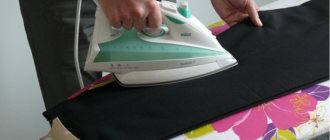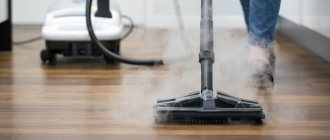Each of us has washed our car at least once and was not always happy with the result - something was not washed.
However, our interlocutors are confident that any car owner can challenge professional dry cleaning. You just need to know a few cleaning rules, following which you get excellent results.
To test these words, we invited members of the AvtoGrodno group, whose cars have different types of pollution. In a couple of hours, more than 40 Grodno residents responded. We selected 4 cars and invited them to test.
The secrets of dry cleaning will be revealed by Dmitry, the author of RAZE cosmetics, the production of which is established in Grodno. It is Dmitry who knows almost everything about automobile pollution and has been working in the car wash industry for 16 years, and for the last 10 years he has been studying pollution at the molecular level.
How to wash your car yourself without damaging the body?
Our world is developing rapidly, and automotive technology is improving tremendously quickly.
Modern cars have an aesthetic appearance, which is based on the paintwork (paint and varnish coating). It is worth keeping in mind that the paintwork is quite vulnerable to the physical impact of the harsh environment on it: small stones hit the body while driving, if you go out into nature, tall, tough vegetation also causes damage to the paintwork, although not visible to the eye. This is all natural and there is nothing you can do about it. How can you wash your car yourself without causing damage to the body? Many car owners do damage to the paintwork of their expensive car with their own hands, without knowing it - they wash the car themselves, not knowing how to do it correctly. Of course, many people understand that it is highly undesirable to wash the car yourself, especially from a bucket, so they prefer to shell out money for a car wash. Indeed, for paintwork, washing with a bucket is very dangerous. The fact is that when you rub a rag or sponge over a dirty body, you thereby scratch the varnish on the paint, creating micro scratches. Firstly, the varnish becomes vulnerable, and dirt and chemicals that are dangerous to the metal, such as salt and de-icing agents, are easily eaten into the paint. As a result, the service life of the paint is reduced significantly.
But not every car owner, even a cheap car, has enough money to regularly wash his car at a car wash. It's no secret that the vast majority of cars were purchased on credit, which must be repaid monthly. Therefore, the question arises, how to wash the car yourself and save money? And now we will tell you how to do it correctly without damaging the paintwork.
Good products for cleaning the car body at a car wash
The concept of good products should be combined with well-known brands and rather expensive materials. This means that such materials will be counterfeited, since almost all expensive products in Russia have a certain percentage of counterfeits. This is why many car washes suffer from poor quality of work performed. You can be sure that in this case they are using unprofessional means or fakes to save on costs. Here are some decent chemistry options:
- Karcher RM-806. One of the most popular types of foam in professional car washes, the composition is very gentle, but copes well with basic contaminants, this indicates high quality.
- Nerta Carnet J. Before Karcher came along, this liquid was a staple among good companies. It is quite active, requires quick rinsing, but copes with the tasks.
- GRASS. This is a Russian product that the regions are just beginning to embrace. It is practically not used in Moscow, but overall it shows a good combination of low cost and high quality work.
- Israeli chemistry. Only a few companies supply a range of Israeli car care products. Most come in Hebrew packaging and the quality is excellent.
- German products. There are many German brands of chemicals unknown to us that work great. If the packaging says Made in Germany, the product is usually good, except for fakes.
As you can see, there are not many options for washing your car with good products. These offers are often counterfeited, since a 5-liter canister of such a chemical composition costs a car body care center a considerable amount of money. Counterfeits mostly contain much cheaper products, poured into packaging from expensive liquids. This means that your car will be washed with unknown means, and this will definitely affect its appearance after just a few visits to such a service.
How to wash your car yourself at a self-service car wash?
You can go to a regular car wash, where they will do everything for you and it will all cost 300-400 rubles. We suggest choosing a self-service car wash, where you can wash your car yourself for only 100 rubles. To avoid getting dirty while washing, it is highly advisable to take a raincoat and, if necessary, rubber boots with you.
Arriving at the self-service car wash, we put 100 rubles into the machine. For this amount you usually get 4 minutes of time. But the time count will start only when you press the first button. Therefore, you need to have time to prepare, put on a raincoat in advance and pick up a high-pressure washer gun.
We only have 4 minutes. We choose a simple tactic: 2 minutes for washing with powder (foam), 2 minutes for rinsing.
It is better to apply foam to the body evenly over the entire surface of the car. You don’t need to apply a lot, as there won’t be enough time to wash it off from all parts of the car. It is highly undesirable to leave foam residue on the body. The paintwork is very sensitive to auto chemicals.
It needs to be washed off quickly and easily. High pressure water cannot be brought too close to the body, otherwise there is a risk of paint destruction. You need to control the water pressure like a brush, using quick and smooth movements to remove the foam. The stream must be kept at an angle. The correct way to rinse off the foam is from the bottom up, but since we are running out of time, we will do it the other way around – from the top down. Don't forget to wash the wheels and under the arches.
So, now you know how to wash your car yourself for just a hundred rubles in 4 minutes. After finishing washing, do not forget to wipe the body with a clean rubber rag, driving the car to the side so as not to disturb anyone.
How to wash your car yourself from a bucket?
To do this you will need:
- Latex gloves;
- Clean bucket (preferably 2);
- Pure water;
- 2 clean sponges;
- Car shampoo;
- Clean rag. A rag is needed to remove residual moisture after washing. A microfiber cloth or so-called “rubber cloth” is best; it comes in a yellow plastic case.
It is advisable to have access to plenty of water. There is no need to save on water; if there is little of it, it is better to refrain from washing yourself for now. There is no need to be lazy about going out to collect water in a bucket.
- First of all, you need to wet the car without touching it.
- Pour 2-3 buckets of water onto the body, paying more attention to particularly dirty areas.
- Then dilute car shampoo in a bucket according to the instructions written on the bottle.
- Next, we apply foamed car shampoo from a bucket onto the wet body using a sponge in the following order: roof, windows, hood and trunk, headlights and taillights, left and right sides. When applying car shampoo, do not press too hard on the sponge. Having touched the body, lightly press and run the sponge over the surface, squeeze the brush, smoothly squeezing the sponge. Attention should be paid to all places, including wheels and arches. After covering the car with car shampoo foam from a bucket, it is advisable to wait 10-15 minutes while the chemistry works with the dirt. It's time to have a smoke.
Stages of the procedure
A manual method of cleaning the body part from dirt, which requires the presence of basic equipment - a bucket, microfiber, suede cloths, a water squeegee, a porous sponge, auto chemicals, etc. Ideally, there should be tap water, a well or a reservoir nearby.
Warning.
Washing is prohibited near any type of water bodies and within water protection zones.
Moreover, doing this on a city street or any other place in a populated area, except for specially designated areas - and only automatic car washes are considered them - is strictly prohibited. Therefore, the issue is mainly resolved in the courtyards of private houses or in summer cottages. If we talk about shampoos, they are selected taking into account the hardness of the water and how dirty the car is. Moreover, you cannot use other, non-specialized products: they may not remove stains, but due to alkali or acid they will damage the top layer of paintwork.
Use of auto chemicals.
Some experts recommend using car shampoo no more than 2-3 times a month, and for severe stains using other chemicals. How much product to pour into the bucket depends on the degree of its concentration. Therefore, you need to listen to the instructions on the label, which also indicates the expiration date of the drug. There are also dry car shampoos, but we rarely use them. In addition, to clean the engine and oily parts, it is better to use white spirit rather than specialized auto chemicals. Even a novice driver probably knows that washing powder is contraindicated for these purposes...
Stage 1
It is necessary to apply a large amount of water to the car body, which will wash away dust, organic particles, and silicates. Buckets are ineffective in this matter; you can pour endlessly, and still to no avail. It will be even worse, since during subsequent manipulations the remaining sand will scratch the paint. And microdamage to paintwork is a direct path to corrosion. Therefore, it is better to use a high-pressure apparatus and a hose.
Recommendation.
It is advisable to wash not only the body part with the windows, but also other suspension parts, not to mention the engine with the bottom. Particular attention should be paid to the suspension, since modern road chemicals that are sprinkled on asphalt in winter are very aggressive - they can “eat” not only paint, but also metal. However, to do this you need to remove the wheels. And since it is more difficult to clean the bottom, this procedure is best carried out at special washing stations.
Stage 2
The second layer of dirt is formed from an “explosive” mixture – exhaust gases, soot, dust, tar. Accordingly, you can get rid of it only by treating the surfaces with shampoo. For this procedure, you need a porous sponge, which is moistened in water with the addition of shampoo. The water should not be cold, otherwise the auto chemicals will not dissolve well in it. It is recommended to use 2 buckets, this will help separate the dirty and clean soapy water. After all, washing with 1 bucket means dirt getting back onto the body, and the sponge will scratch the paint.
Stage 3
Everything is simple here - you just need to wait until the car shampoo has an effect on the dirty film. How much to wait? It depends on how dirty the surfaces are. In order not to waste time, you can use a brush to remove deposits from the wheel rims.
Stage 4
Now you need to remove the applied car chemicals. To do this, just spray the body with warm water a couple of times and use a roller brush and a squeegee to clean the soapy areas. Squeegee is needed in order to remove excess water from the glass, otherwise stains will remain on them.
Stage 5
We rinse the body with the same water, finally removing any remaining shampoo and liquid. Next is drying. Ideally, it is better to use a microfiber towel with a waffle texture, as it can absorb 5 times its own weight in water. They put it on the body, wet it, squeezed it out, and repeated the process. You need to start with the roof, then the glass, the hood, etc. Next, we dry the internal surfaces - doorways, thresholds. If possible, blow all corners and joints of the body with compressed air, without leaving a single drop on the surfaces.
Stage 6
We've covered almost everything about how to properly wash a car. However, the procedure will be incomplete if you forget about polishing, after which the body panels, glass, and rims will shine clean. To do this, we use special napkins, and the movements should be circular.
What not to wash a car: the main mistakes of drivers
Homemade cleaning products are cheaper than car cleaning products. Is dishwashing liquid suitable for car washing?
What home remedies can you use to wash a car and achieve a good result without harming the paintwork? Sometimes the idea of washing a car comes to mind spontaneously, and for some reason this is especially true at a time when you are in the country or far outside the city - you can’t get to car washes.
photo: Auto Swiat
In such conditions, of course, you can wash the car yourself, but here’s the problem: as always, there are no professional auto chemicals at hand, and simply pouring water on the dirt is unlikely to help cleanse the body of ingrained road dirt. Perhaps the products that are at hand in any home will do?
What if, instead of car shampoo, you use regular hair shampoo or dishwashing detergent, or maybe regular liquid soap? Which hypothetical household chemicals are best avoided and why?
Yes, home remedies are usually cheaper than professional auto chemicals. But similar, however, does not mean the same! Know that you can really cause considerable damage to your car’s paintwork using whatever comes to hand.
Washing the ceiling in a car
I wash the ceiling of a BMW with a panoramic sunroof. Last year, the drainage holes in the hatch became clogged and stains appeared on the ceiling. The owner also failed to cope with them on his own. Dmitry immediately pointed out the mistake.
— The ceiling must be washed completely and at one time. It will not be possible to wash it a little at a time, as stains will remain. When washing the ceiling and interior, you need to apply a product to the surface that will soak up the dirt, and then use microfiber to collect the dirt. You can’t use a vacuum cleaner, as the ceiling may come off and you’ll have to completely retighten it,” the interlocutor comments.
The specialist explained that car owners sometimes wash the ceiling using ordinary powder. This should not be done under any circumstances - the powder eats into the fabric and can only be washed with copious rinsing. It will not be possible to rinse the ceiling fabric with water, so the powder will remain in the fabric and turn yellow over time, and the fabric will have to be removed and a new one glued on.
The same scam in the back of the ceiling:
You need to wash in one direction, wetting the dirt and collecting it with microfiber. Even on a visually clean ceiling, the difference is noticeable already at the beginning of work:
When the entire ceiling is washed at once, the stains disappear. There are no traces of leaks left:
The sun visors are also easy to clean. The photo shows the Chrysler interior:
Contamination is treated with an aerosol:
And assembled with microfiber:
Was:
Became:
By the way, the Chrysler had stains of dirt on the ceiling, but in some places the ceiling began to sag, and a loose mass was felt under the fabric. If such a ceiling gets wet, the fabric may peel off even more. They didn't take any risks.
Problems with the Most Popular Homemade Car Wash Products
Dishwashing liquids: These foam up like car shampoo and work very well on greasy dirt. Unfortunately, the cleaning effect is usually disappointing: these kitchen solvents cannot cope with bitumen stains and other complex road stains left on the varnish.
Attention! Some fluids may contain vinegar, which accelerates corrosion.
Floor and tile cleaners: While hand washes should not be chemically harsh, other household cleaning products may have a higher paint hazard. They often contain strong acids that cause corrosion of metal elements. Products containing bleaches will also discolor varnish and plastic elements.
Cleaning lotions: The abrasive particles found in bathroom cleaners are much sharper and larger than those found in car body polishes. Using them on a vehicle can damage the paint and plastic.
Selecting a detergent
To wash your car, you must use only auto chemicals. Acids and alkalis contained in regular soaps or cleaning fluids can damage the surface of the body. To remove old stains, there are special products that are used before applying a soap solution. Experts advise using shampoo no more than two to three times a month.
Car shampoo can be:
- dry;
- liquid.
For liquid products, the bottle label always indicates in what proportion to dilute the shampoo. The engine is treated with white spirit.
Do not use to wash car body!
Aggressive products for the kitchen and bathroom (lotions, descaling agents, bleaches) are strictly prohibited for washing the body. Moreover, they should not even be stored near the car, because even one small drop is enough to destroy the varnish or paint. If the product gets on the body, quickly remove any remaining residue and rinse everything with plenty of water.
photo: Auto Swiat
Car care products are usually more delicate than household chemicals.
As mentioned above, do not use sponges to wash dishes. We also recommend that you be careful with washcloths. They, just like sponges, can cause severe damage to the bodywork.
Can be used, but with caution!
Among household cleaning products, you can use soap (but with a neutral acidity level) and hair shampoos (similarly, a low ph level is important) in a car without much risk.
You can also use (but be careful): window cleaners (as long as they don't contain vinegar), upholstery stain removers, wipes, and even some household cleaners (but not varnish!).
At the same time, it would be a good idea to check whether the product does not cause damage to varnish and paint, does not leave marks on them, does not destroy them, and so on. To do this, first test the “collective farm” product on a small, inconspicuous area. If no clouding or other defects appear within half an hour, you can try washing the car with it.
Hand wash (alcohol-based hand rubs or other alcohol-based products, including pure alcohol) is also suitable for some applications. They are useful, for example, for cleaning disks or plastics contaminated with grease, bitumen and other complex contaminants.
For fabrics, it is better to choose lint-free soft fabrics, preferably made from microfibers.
Glass and dashboards in the cabin
First you need to buy a special glass cleaner and car wet wipes.
Next, you should act in accordance with the instructions indicated on the detergent label. Spray the product onto glass and mirrors, and then wipe the surfaces with a dry cloth in a circular motion, making sure there are no streaks. You can often see that car owners wash their windows with plain water. This method has some disadvantages: firstly, stubborn dirt cannot be easily washed off with water, and secondly, there is a high probability of leaving stains.
It is recommended to use a damp cloth to clean plastic interior surfaces. In hard-to-reach places, you can use a stick by putting a napkin on its end. It is better to wipe large surfaces with rotational movements.
There is no substitute for car shampoo
But all of these washing products listed above are not only hypothetically or obviously dangerous, but also ineffective compared to professional car care products. Therefore, their use is either not encouraged at all, or they can be used, but not on an ongoing basis - they are ineffective and are only a short-term replacement in a situation where there are no other options.
photo: Auto Swiat
Sometimes the idea to wash your car comes to mind spontaneously, but you don’t have the necessary car chemicals at hand!
If you live outside the city and often wash your car on your own, we advise you to purchase a normal car shampoo and wash it using normal car chemicals. This way the paintwork will be preserved, and the result will be fast and high quality!
photo: Auto Swiat
You can find hair shampoo, dishwashing liquid and washcloth in every home... But is it worth using them?
Source
What not to do
Some car owners, especially newbies, those who have recently become owners of a car, wash their car incorrectly. This is completely undesirable, since just one such procedure can ruin the coating. Therefore, before you start washing your car, remember well what not to do.
When washing a car you must not:
- Rub the body with a rag or sponge. These actions lead to the formation of micro-scratches on the varnish layer of the coating. Later, chemicals that are sprinkled on roads in winter and other contaminants can penetrate into the cracks. This not only reduces the shine of the body, but also shortens the life of the paintwork.
- Wash your car with water from an open reservoir. It may contain particles of sand or dirt that will scratch the surface of the car.
- Wash the car in an open space in direct sunlight. They dry the detergent before it reacts with dirt.
- Start washing immediately after the trip. The car needs to be given time to cool down.
Preparation
- When washing clothes, they should not contain zippers or metal components that could scratch the paint. This happens when you need to reach the far side of a large roof or hood. Remove rings, bracelets, watches. They also scratch the paintwork.
- The body should not be hot. Choose a non-hot day or park the car in the shade, under a canopy, or in a garage. It is also convenient to wash early in the morning or evening. On hot panels, soapy water will dry out before it has time to work.
- If possible, use a hose with an adjustable nozzle.
- It is important to use the right techniques to keep your paintwork in good condition. Don't use kitchen towels with unnecessary rags. This will only lead to additional scratches. Also, do not use dishwashing detergent. It is quite aggressive, it will wash away the protective composition of the paintwork and dry out the rubber seals.
- To properly wash your car, you will need to make some investments. Buy a washing mitt made of sheepskin or microfiber (in extreme cases, a sponge), a high-quality microfiber towel for drying (see article about microfiber), a good car shampoo, 2 buckets with lattice inserts on the bottom (we’ll look at it in more detail below), special brushes and cleaners for washing wheels.
- Spray cleaners are popular. They eliminate or shorten the process of scrubbing off difficult-to-remove contaminants. You just need to spray the cleaner, wait a while for it to absorb, then rinse off. The article “dry washing, how it works” describes how to wash only using a spray detergent and microfiber.
- For wheels it is better to take a separate sponge. For hard-to-reach places it is convenient to use a toothbrush.
- The shampoo acts as a lubricant, softens friction, and reduces the likelihood of scratches.
- Remove the tag from microfiber towels as it will scratch the paint.
How to wash your car by hand at home
If you have already prepared everything you need to wash your car, then you can get to work:
- Wet the entire surface of the car body well, without touching it with anything other than the water itself. To do this, pour several buckets (at least 2-3) onto it.
- Dilute car shampoo in a container with clean water according to the instructions.
- Using a sponge, apply the foam compound to the body, starting at the top and gradually moving down. Do not press or rub the surface with a sponge. You can only squeeze it lightly with your hand, squeezing out the foam.
- 10-15 minutes after applying the foam, when the shampoo dissolves the dirt, you need to pour several buckets of water onto the car again.
- Only after large particles of dirt have been washed away can you take a clean sponge and rinse the entire surface thoroughly with water again.
- Finally, spray the car with water from a bucket again and wipe it dry with a special cloth.
How to wash bitumen off a car
We managed to find bitumen on the cars of two participants in the experiment: Volkswagen and Chrysler.
— Bitumen is not washed off with regular car shampoo or active foam and remains on the body in the form of dots or lines. You need to use a special detergent composition,” says Dmitry.
— The detergent should be applied to areas with bitumen and wait a couple of minutes, soon the bitumen will begin to drain. A common mistake car owners make at this point is rubbing the bitumen with a sponge. In this case, the contamination is only smeared, the specialist notes.
After the bitumen begins to drain, it must be washed off with water. If it doesn’t wash off at once, reapply the product, wait a couple of minutes and rinse again.
As a token of gratitude for the cars provided, car owners were given branded air fresheners with Belarusian symbols. Produced in Grodno.
Car washing with Karcher
If you purchased a mini-car wash - Karcher, then do not think that the car will wash itself. This device greatly simplifies the process, but adherence to technology when working with it is also important.
The following instructions will tell you how to wash your car with a karcher:
- Connect the device to power and water supply. How to do this correctly is described in detail in the instructions for the mini-car wash.
- Pour special concentrated foam, diluted in the required proportion with water, into the tank.
- Start washing by applying foam to a dry, dirty surface. It is applied from bottom to top, with horizontal movements.
- The foam must be allowed to interact with dirt for 4-5 minutes.
- Then, start rinsing it off with a stream of clean water under high pressure in the same sequence as you applied it - from bottom to top, starting from the wheels.
Methods of application
There are two ways to wash your car yourself: manual and contactless. In the first case, to carry out the work you will need a water container (for example, a 7-12 liter bucket), two foam sponges of various sizes (small for wheels and heavily soiled areas, large for everything else), a soft lint-free rag, detergent, water (15–30 l). The optimal amount of car shampoo to create a cleaning solution is usually indicated in the instructions.
It is advisable to wash the car with water whose temperature is close to the ambient temperature. In any case, you should not place the car in conditions of contrasting temperatures, as this may damage the paintwork.
Defects in the form of microcracks form on it. In addition, it is not recommended to wash your car in the sun. As a last resort, wash in small areas, which are wiped immediately. As for the sequence of the procedure, the car should be washed from top to bottom. That is, they start with the roof, then move from the windows to the trunk, hood and sides and end with washing the wheels.











